I swear that Equestrians are experts in making excuses. Don't get me wrong, I include myself in that observation as well. I've been called out more than a few times in the course of my riding (and life in general) to stop making excuses. But I'd like to take a moment to say, it's 2014 so can we please STOP MAKING EXCUSES to justify horse abuse?
Is there really any viable excuse for abusing a horse?
According to the Parelli's there are several.
“Without knowing any of the situation, not knowing what was going on and the whole thing has been taken out of context,” are words from Linda Parelli to excuse her abusive behavior towards a half-blind horse; as though knowing the context of the situation would make hitting the horse in the face justifiable. Even 10+ years after the incident she can't own up to it, set an example to students that there is no excuse for roughing up a horse, and move on.
Funny enough, those of us who are critical of her actions would have nothing to criticize if she'd acknowledged her mistake (abuse) in the first place. Hey, we all make beginner mistakes out of frustration and emotion, but it's what we do with those mistakes that defines us; and the Parelli's have chosen to make excuse after excuse and then invite us to watch a demonstration of their “edutainment”.
The problem with these excuses is that others are learning from their example. They're learning there are reasons to beat on a horse in the name of “training” and “leadership”. Like this young woman who, imo, is far more violent against this horse than I've ever seen of Linda Parelli.
What starts out as a calm situation quickly escalates from yanking on the halter to slapping the horse and even kicking him in the belly. I'm sure this ‘trainer' has a plethora of excuses why these actions were necessary, and how absurd that attendees laugh while she strikes the horse?Aurélie Merlin, a Parelli student/trainer/instructor in France.
And it isn't just other ‘professionals' that are copying this behavior, but also people who probably believe roughing up the horse is just part of horsemanship, as demonstrated by the most successful clinicians today.
Not Just Natural Horsemanship
If you're worried I'm picking on the NH camp don't be, I pick on abusive behavior regardless of discipline. Also, I enjoyed watching Kristi Atkinson working with her horse, who happens to be using NH.
We see excuses in Dressage as riders emulate Olympians and hyperflex their horse's necks. Actually, scratch that because hyperflexion happens in Dressage, Show Jumping, Reining, Natural Horsemanship.. what else am I forgetting?
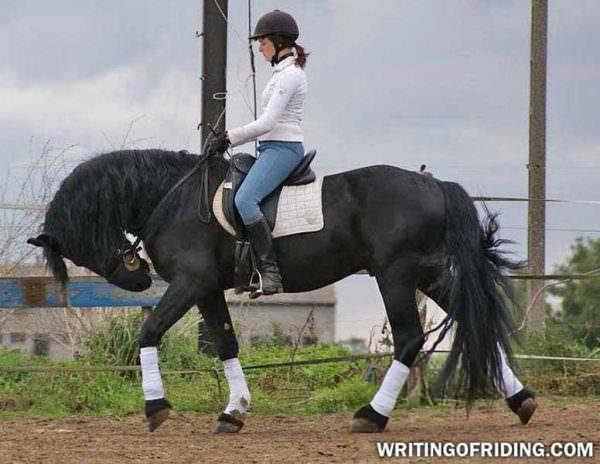
And what's the excuse for using Rollkur? Dressage riders claim they need it to control their hot tempered horses, to improve suppleness, to round the horse's back, to…. but aren't there other ways to accomplish all of this without abusing the horse?
Also, can we address making excuses why it's okay to intentionally breed sick or unsound horses? INTENTIONALLY causing your foals to face a life (20-30 years!) of compromised health that could have been avoided?
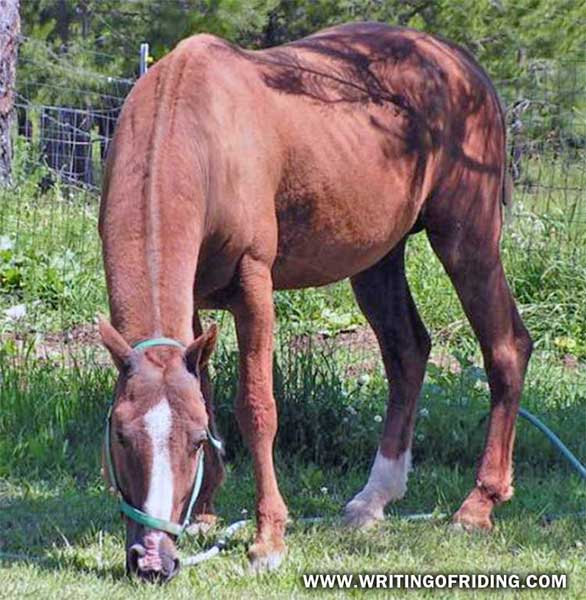
But..
As we're working on taking responsibility for our actions. “Yeah, I did yank too hard on my horse out of frustration, but…” doesn't count. That “but..” on the end negates the whole admission. Acknowledge what you did, period, end of statement. Then work on what it is you want to change to be a better rider. I know it's hard, I've said a lot of “but..” admissions in my life, and I can tell you it's difficult to swallow your pride but far more rewarding.
The Parelli's could have benefitted from following this advice as they've made mistakes resulting in horse abuse.
But we are all human..
Yes, we are. And being human means we're going to make mistakes. And likely at some point we're going to make mistakes that hurt the horse, just like we'll make mistakes that hurt ourselves too.
By denying you've made a mistake, by not owning up to your mistakes, you're cheating yourself out of the chance to learn from them and become a better equestrian. Period.

Our ego absolutely HATES admitting fault (deny, deny, deny!). So, are you going to let your little old ego prevent you from creating a better environment for you and your horse, or are you going to step up to the challenge, be brave, and stop excusing horse abuse?
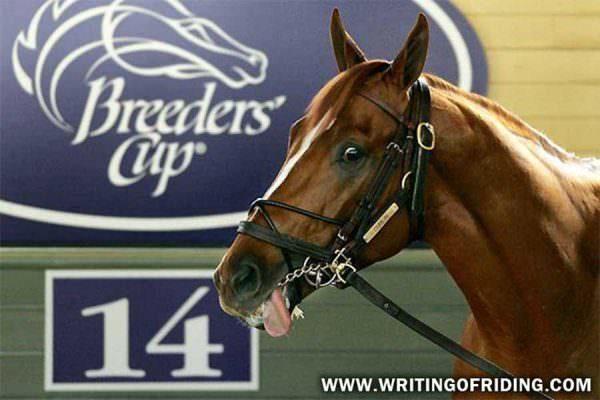

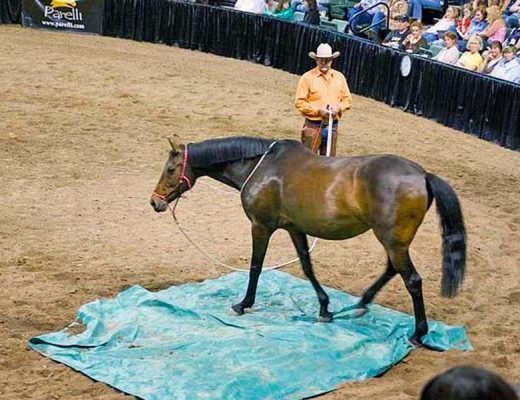
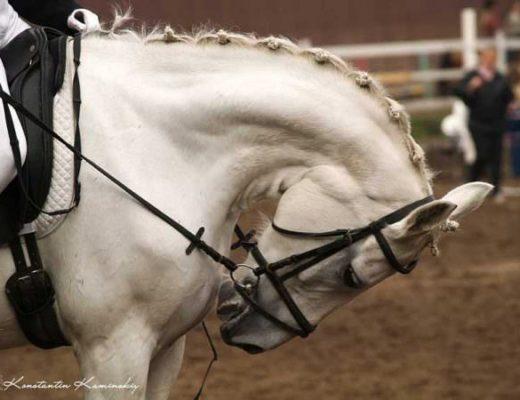
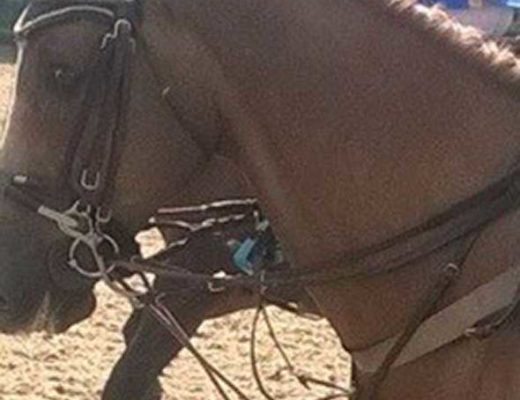
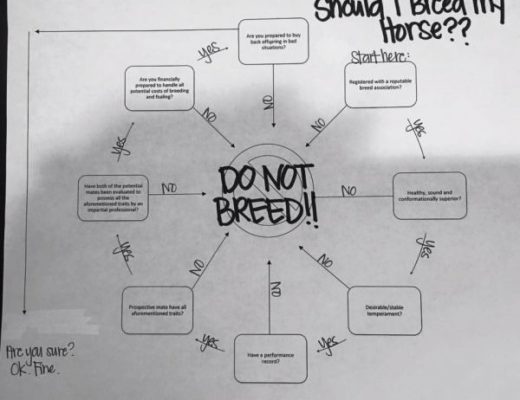
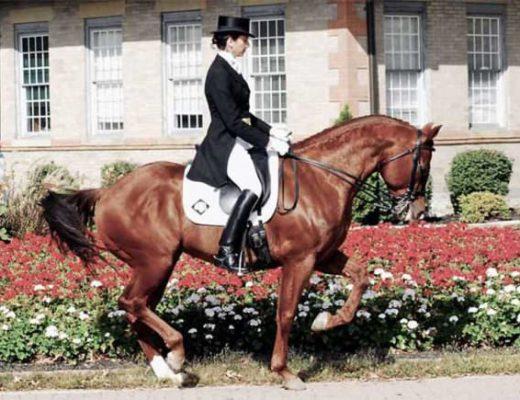
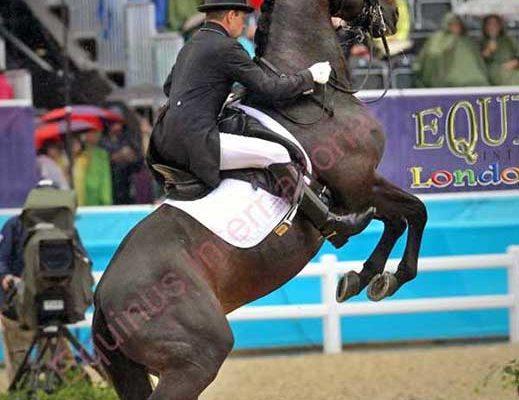
I agree completely! I too have made plenty of mistakes in the past (and will continue to do, I’m sure!) but it’s admitting them that has helped me learn – in much the same way that my horses do. I make the point these days that if after asking 3 times for an action, my horse is still not responding or ‘overreacting’, I stop and consider exactly how am I asking and what I’M doing wrong, before continuing to escalate pressure or getting angry at my horse for not understanding. I’m not afraid to admit that every single time, it has been my own fault that I hadn’t initially succeeded! If only the woman in that rope halter video did the same, she might realise that her body language was cueing the exact behaviour that she then punished. Sadly though, I see this behaviour all the time and very often from instructors and trainers who really should know better.
Thanks for sharing Zoe! You make an excellent point about how to improve your habits while working with the horse – ask, ask, ask, then evaluate your own actions to see where you could be more clear, helpful or supportive of your horse’s success. 🙂
The video, I think really demonstrates her need to pick a fight (and then try to win it). Have you ever met someone who just needles you trying to get you to argue with them? No matter what you do it’s wrong and your fault, it’s never their fault (in their opinion!). I’m not certain there is a nice gentle way to talk to this sort of personality to help them change, what are your thoughts?
Cheers,
Erica
Yeah, you’re right. I meet a lot of these types in the horse world – this attitude of don’t let the horse ‘win’. The same with riders – I meet a lot of people who boast about how good a rider they are as they can ‘handle’ a bucking/rearing/bolting horse, missing the fact that true horsemanship should be about working to avoid these reactions in the first place. I’m much more impressed by the quiet riders I see riding ‘difficult’ horses who manage to avoid any problems seemingly without doing much – that’s the kind of skill I aspire to both on the ground and in the saddle.
Sadly, I think you’re right – these people are unlikely to change, but what we can try to change is the opinion of others watching them. Younger or less-experienced riders often look up to these people and copy their ‘techniques’ – I admit to being equally ‘impressed’ when I younger when someone ‘stayed on’ or ‘dealt with’ a ‘crazy horse’ and I was lucky enough to have knowledgable people around me who could point out that there was a better way. It makes so sad when I see the kids at our yard yelling or hitting their ponies exactly as they’ve seen others do – these days I make a point of showing them a better way and encouraging them to think about why the horse isn’t complying first.
I agree Zoe, education of young riders is likely our best shot at seeing large-scale change. Peer pressure is very powerful, as is the environment you’re exposed to imprinting you to see certain actions as being more acceptable.
I agree that it is more important to not have the bucking, rearing etc. Horse in the first place and that seeing a well behaved horse being quietly ridden is much more impressive than watching someone sticking on something behaving the other way. However I can’t agree that this is so where the riders are merely avoiding the situation that triggers the behaviour. The avoidance of the trigger to the behaviour simply leads further and further into restricting where or the conditions under which you ride e.g. you can’t ride on a windy day or where it is not quiet.
Working with a horse that has these sorts of issues is not about avoidance it is about developing strategies that allow the horse to develop past the point where the triggers of the behaviour no longer provoke such extreme reactions.
Take for example the horse that gets 20 metres away from its home yard and then simply will not go forward and if pressed will rear it is not an answer to turn around before the point the horse rears and go back to the yard and ride for an hour producing beautifully performed high school manoeuvres before you finish. In this instance I think a description of the incident might perfectly well be defined as “the horse has won” he has successfully achieved his aim of not going away from the yard whilst the rider has not succeeded in their aim of going for a quiet ride or has lost the argument. On the other hand developing strategies to get the horse past the 20metre threshold such as approach and retreat which eventually succeed in overcoming the problem without triggering the rearing etc. Is impressive riding but most definitely is not avoidance and could very well be looked at as winning.
I will end with this: often what we think is a cause of the horse’s behavior (horse is afraid to leave the property) is actually a symptom (the real cause being that the horse doesn’t trust his rider). In those cases we address what we think is the cause by forcing the horse to ride away from his stable. He protests because he’s afraid and the rider responds in kind to continue forcing him by whatever means he can (pulling on the reins, kicking with the legs, using a whip or spurs) to make the horse ride away from the stable.
The problem is that by behaving this way and failing to see the true cause of the horse’s behavior (he doesn’t trust the rider) and acting in a way that fails to develop or continue building trust between the horse and his rider, you’re teaching the horse he is right to fear leaving the stable. As a rider you go on believing you were right to “not let him get away with” his actions and you believe you won (by forcing the horse to leave the stable). But really you’ve lost. You lost sight of what was really going on for the horse, and also continued to lose the horse’s trust.
We are very often taught that the horse is like a disobedient child. That he refuses to do what we ask because he’s spoiled or mischievous, stubborn, his horsenality chart has predicted it, etc. But the greatest motivator for any animal (humans included) is the presence of trust.
If you trust someone explicitly and they ask you to come with them, no other explanations, you are very likely to just go with them. If you don’t trust someone you’ll likely refuse outright or begin asking lots of questions. “Where are we going”, “why should I go with you”, “who are you”, “what do you want from me”, etc.
The only thing we need to work hard at winning with the horse is his trust, and that is done by behaving in a trustworthy fashion. Making the horse do something so that we “win” is not trustworthy.
I said don’t avoid situations but develop strategies to overcome them such as approach and retreat. That is truly impressive riding not beat the horse up force it in any way etc. In order to develop strategies that will work for an individual problem and individual horse you have to engage in why the problem is happening that is what makes the riding impressive not the nice quiet high school manoeuvres in the school that are only happening because you can’t go elsewhere.
As for the terminology with win or lose we as a race in general have a competitive nature and language structure it is another way of expressing success or failure nothing more nothing less.
I’m not certain I understand your comparison of developing strategies for problems vs. “the nice quiet high school manoeuvres in the school”?
My opinion is that a horse trusting in his rider is capable of working within an arena as well as riding out of doors. A well rounded horse to match a well rounded equestrian. As you mention dressage I’d say it’s only recently that the discipline has become so shuttered and emphasizing arena work as the primary endeavor. It has a strong history in the military, and as we know wars weren’t fought in an arena but required horses who received a more versatile schooling.
To be a ‘winner’ there must necessarily be a loser. Do you know what it feels like to always be the loser? If we as riders have to always win that means our horses always have to lose. And still we expect our horses to be losers who love us and are excited to see us (be caught), to take us for rides, to trust us and to be confident creatures. The psychology of that doesn’t mesh well. On top of that if you have little real chance of winning, how confident can you be over time?
Also, I understand competition when it is need-based (we’re all starving in a room and I’m going to compete to get more food than others because I need it to survive and it is the only [and therefore the best] option), but am not naturally inclined to feel the need to compete with the horse and “win” at some task which is not need based and which presents other options to accomplish the same end-goal.
And success/failure are completely subjective. My definition of success will likely vary from yours. Of course that would be expected because we both have strong opinions that differ from one another. But you could also imagine that even your definition of success will vary slightly from those who are otherwise in more agreement with your opinions; as would those close to me differ slightly as well.
Actually that might be an interesting comparison of what our opinions of success with the horse are largely based on?
Thanks for sharing Zoe! You make an excellent point about how to improve your habits while working with the horse – ask, ask, ask, then evaluate your own actions to see where you could be more clear, helpful or supportive of your horse’s success. 🙂
The video, I think really demonstrates her need to pick a fight (and then try to win it). Have you ever met someone who just needles you trying to get you to argue with them? No matter what you do it’s wrong and your fault, it’s never their fault (in their opinion!). I’m not certain there is a nice gentle way to talk to this sort of personality to help them change, what are your thoughts?
Cheers,
Erica
Yeah, you’re right. I meet a lot of these types in the horse world – this attitude of don’t let the horse ‘win’. The same with riders – I meet a lot of people who boast about how good a rider they are as they can ‘handle’ a bucking/rearing/bolting horse, missing the fact that true horsemanship should be about working to avoid these reactions in the first place. I’m much more impressed by the quiet riders I see riding ‘difficult’ horses who manage to avoid any problems seemingly without doing much – that’s the kind of skill I aspire to both on the ground and in the saddle.
Sadly, I think you’re right – these people are unlikely to change, but what we can try to change is the opinion of others watching them. Younger or less-experienced riders often look up to these people and copy their ‘techniques’ – I admit to being equally ‘impressed’ when I younger when someone ‘stayed on’ or ‘dealt with’ a ‘crazy horse’ and I was lucky enough to have knowledgable people around me who could point out that there was a better way. It makes so sad when I see the kids at our yard yelling or hitting their ponies exactly as they’ve seen others do – these days I make a point of showing them a better way and encouraging them to think about why the horse isn’t complying first.
You appear to have missed out a whole raft of abuse (but I might have missed it as I see your top photo) the horseracing industry does huge amounts of both physical and psychological damage to very many horses probably many more than the rest of the sources you have listed put together. I very rarely see any criticism of this huge raft of abuse that destroys more horses quality of life than anything else. To much money involved for both people and governments and the widespread ignorance of what is perfectly obvious if you know what your looking at. How many of the people posting on this group of topics have or do bet on at least the grand national or take part in an office pool on the race or their countries equivalent? If you do you are supporting the biggest and most prolific perpetrators of abuse around.
You’re absolutely correct Jean, the amount of abuse present in the horse racing industry is.. well, quite unequaled in many other facts of horse-related sports.
That being said, the horse racing industries issues are very far removed from the practices of most actual equestrians. It is a sport supported by the ‘general public’ who may not otherwise have any other contact with horses. Many Jockeys wouldn’t know how to steer a horse down a trail if they were to go on a normal horseback ride. The majority of betters are not equestrians either.
To fully address the issues of horse racing I doubt it needs to start by addressing the horse community, as I’ve met only a small fraction of a percentage of real horsemen who support horse racing in any manner (whether it’s in the breeding, training, care of them or actually gambling on the races). It is the general public, seeing the sports rules change for the better (too many could use improvement if the sport wasn’t banned altogether but one biggie would be requiring those entering maiden races to be older than 2 years), and helping to remove the ‘celebrity’ that comes with owning racehorses, winning as trainers and winning as jockeys.
Cheers,
Erica
Edited to add: And let’s not kid ourselves, trying to say “well those guys do MORE abuse than we do” does not mean that the rest of the horse industry doesn’t need a serious overhaul of what are considered socially accepted treatment of the horse.
Okay last time I will post on this blog site. Erica I appreciate this is your blog site and as such you are the overall moderator. But just because someone fails to agree with you and points out your inconsistencies is really no reason to be rude or denigrate their attempts to communicate.
Over all the impression you leave with this behaviour is the site is an ego trip for you and not a forum for discussion or effort to improve the lot of the horse at all. So sad.
I’m sorry you feel that way Jean, I honestly have made efforts to connect with your opinions but have felt frustrated at not being able to understand your full meaning at times. Certainly I could have posed that frustration in a more elegant manner for that I apologize.
I truly am interested in discussion and enjoy hearing other opinions and thoughts, how else are we to learn if we only see what we already agree with or practice?
If I wished only to serve my ego I would merely moderate(block) commenters who disagree with me. That is not the case at all.
Cheers,
Erica
the woman in the video is a French leady Aurélie Merlin she is a Parelli follower and has founded and has become a famous Natural Horsemanship trainer.
She posted this video in her youtube as demonstration of good skill because at the end the horse does not invade her space ( see Linda) and is able to touch the ear of the horse (see Pat Parelli)
after she start receiving thousand of critique she took down the video but many had by then copied it and are keeping it on youtube. I think her career after this has taken a hit. Her marketing department is not as powerful as other to sell this as Love Language Leadership
I did search for her, doesn’t seem like there is much of an online presence anymore. Is she still holding classes and clinics? (I hope not for the horses..)
Hi Erica
I got a new horse a year ago after a 4 year break from horse ownership. With my new boy I wanted to do everything “right”. And it is difficult. Really difficult. There are so many “accepted” shortcuts, advocated by trainers, professional riders, websites, shop shelves… Shortcuts are the norm, not the exception. Training tools that were (maybe) designed for specific scenarios are used to replace basic foundation work that maybe only requires… you can guess it, time and patience. My boy Yankee is a big 17.2hh TB. Under his previous owners he learnt to lean and lean and lean. To try school that out of him a first response was, stronger bit. Something he won’t dare lean into. Sounds familiar doesn’t it? He pokes his head in the air..hmm what about drawing reins to get him back into a frame… Not moving forward off my leg? What about some spurs? I’m lucky. My trainer is old school and we did it the long slow way with a snaffle bit and lots of schooling (read blood sweat and tears for me).
The problem with the horse world is that it’s filled with well meaning people, most of them slightly less knowledgable than they should be, naive enough to fall for shortcuts because they just don’t know any better. IMHO that equals abuse.
Hi Yolande,
Thank you for sharing some of your experience and journey, it is really wonderful to hear a story of someone of someone not giving up or just taking the shortcut routes and sticking with it to create something more meaningful with their horse. 🙂
I’m most concerned about the practice of professional abuse. It is inevitable as students of the horse that we will make mistakes, that is life. If someone makes a mistake and can at some point recognize, acknowledge it and learn from it I say kudos to them.
There is this issue where we quietly ignore those professionals who are willfully abusing the horse, who are in a professional capacity perpetuating habits that are outright painful and damaging to the horse through their students. I would love to see more public critique of methods (in a useful way, rather than just personal attacks on people which I don’t feel serves the horses either) from the horse community, holding those in teaching and training positions (as professionals) to higher standards.
I think it is coming. We’re seeing more and more online critique happening, but it needs to transition to the real world. Still, we’re making progress in the right direction.
The portion of a leadership video I quoted in this post I believe is very relevant to some of what you touched on. Most training methods are attempts to control and manage the horse, where real leadership is about the relationship and learning how to get the horse to follow you.
http://www.writingofriding.com/the-art-of/leadership-without-ego-is-the-rarest-commodity/
The opening statements are what I’m referring to – the relationship between quality, time and money. Most shortcut methods or training gimmicks fall in line with this idea.
Cheers 🙂
Erica
The problem is that when a sport becomes professional, I think through the sheer nature of competitive sports people, winning has to happen at all costs.
If we look at other sports, such as athletics, road cycling… swimming, whatever, it is rife with the abuse of methods that will bring a result that will create a better chance of winning. In those instances, the abuse happens to the athletes own bodies whether it be steroids, EPO or other means. The end result is that the abuse of performance enhancing methods are rife, not only in professional sports, but all the way down to school sport level.
The sadness when it comes to horses is that the athletes have no say as to what is done to them to get to that end result… winning. And students/followers of these professionals see it as the means to an end.
The ultimate objective of “first do no harm” has long been lost.
Yes, the situation around sports (both pro and amateur) is very complex and often “win at all costs” kind of mentality.
The same could be said about a lot of things outside of sports too (academia, corporate careers, etc) so it isn’t limited only to what we see as a sort of common-sports-culture.
I also don’t believe that everyone is equally motivated to compete with other people. For myself I’m actually quite averse to it, if I’m motivated to compete at all it is against myself.
I’d love to see more parents taking on the responsibility of teaching their children it isn’t about competing at all costs to be the best, but I’m not sure that is a trend we’ll soon see at critical mass. Dog eat dog world, right? 🙁
Cheers,
Erica
Hi Yolande,
Thank you for sharing some of your experience and journey, it is really wonderful to hear a story of someone of someone not giving up or just taking the shortcut routes and sticking with it to create something more meaningful with their horse. 🙂
I’m most concerned about the practice of professional abuse. It is inevitable as students of the horse that we will make mistakes, that is life. If someone makes a mistake and can at some point recognize, acknowledge it and learn from it I say kudos to them.
There is this issue where we quietly ignore those professionals who are willfully abusing the horse, who are in a professional capacity perpetuating habits that are outright painful and damaging to the horse through their students. I would love to see more public critique of methods (in a useful way, rather than just personal attacks on people which I don’t feel serves the horses either) from the horse community, holding those in teaching and training positions (as professionals) to higher standards.
I think it is coming. We’re seeing more and more online critique happening, but it needs to transition to the real world. Still, we’re making progress in the right direction.
The portion of a leadership video I quoted in this post I believe is very relevant to some of what you touched on. Most training methods are attempts to control and manage the horse, where real leadership is about the relationship and learning how to get the horse to follow you.
http://www.writingofriding.com/the-art-of/leadership-without-ego-is-the-rarest-commodity/
The opening statements are what I’m referring to – the relationship between quality, time and money. Most shortcut methods or training gimmicks fall in line with this idea.
Cheers 🙂
Erica
Coming back to this conversation, my 66yo mom had a ride on my boy this last weekend. The greatest “win” or reward was watching him with my mom. Soft, gentle, responsive and willing to do everything she asked. All the work we have put into him, was paid back to me in one session. My mom hadn’t ridden in a school for thirty years and he looked like a schoolmaster. That was my reminder why we went the long slow kind classical route. Watching him from the ground I saw a horse so connected with his rider, working in all the right ways.
I enjoy your blog, however, the curly is not bald….
Just like a homozygous (two dominant copies of one gene) appaloosa will be white, a homozygous curly will shed their mane and tails in the spring summer.
They are not bald, but DO shed. And when bred their offspring usually have full manes and tails (unless the foal is homozygous too).
(and not all curlies that are homozygous completely shed out their manes and tails, but it is usually a pretty easy indicator to spot for homozygousity)
The ability to prove a Curly horse homozygous is only by breeding them, which in it’s own fashion is unreliable. How many “homozygous” bald curlies will produce 100 foals to get a fair judgement?
The idea that they are homozygous – whether bald (lacking body hair) or ‘extreme’ (full body coat but lacking mane and tail) – is a myth that travels among breeders without any solid evidence.
Until a genetic test is developed it cannot be proven, and instead can only be suspected based on the number of curly-coated foals produced from non-curly crossings.
I find it very interesting in the rope halter video that the women slaps the horse in the face so when she raises her hand to him he shies away and closes his eye in fear and gets ready for a slap but then pets him, but then turns around and slaps him at another point in time like “psych!”